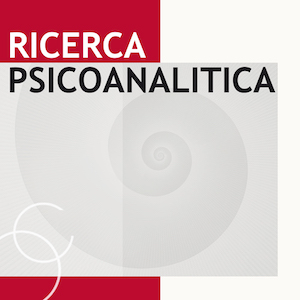Narrative digitali. Le dinamiche affettive legate all’oggetto digitale indagate con metodi proiettivi

All claims expressed in this article are solely those of the authors and do not necessarily represent those of their affiliated organizations, or those of the publisher, the editors and the reviewers. Any product that may be evaluated in this article or claim that may be made by its manufacturer is not guaranteed or endorsed by the publisher.
Autori
I dispositivi digitali, considerati inizialmente come strumenti tecnici sorprendenti, stanno assumendo il ruolo di veri e propri ‘compagni digitali’ che affiancano le dinamiche della vita quotidiana. Il presente studio si propone di analizzare le modalità attraverso cui i dispositivi influenzano le rappresentazioni affettive dell'intersoggettività. Alla ricerca hanno partecipato 22 soggetti ai quali è stato chiesto di interpretare narrativamente 4 tavole proiettive ispirate al Thematic Apperception Test (TAT) di Murray, all’interno delle quali sono state inserite rappresentazioni di dispositivi tecnologici. Appoggiandosi alla teoria psicoanalitica e interpersonale, l’analisi dei contenuti delle 88 narrative ha permesso di approfondire come quattro esperienze fondative della soggettività vengano influenzate dalla tecnologia: Infanzia, Coppia, Immagine di sé, Evento traumatico. L’esplorazione delle dinamiche legate all’oggetto digitale ha tenuto conto degli affetti, della rilevanza data all’oggetto digitale nel racconto e della funzione rispetto alla vita relazionale. I risultati mostrano che la tecnologia si configura come un ausilio nella misura in cui vi è buona comunicazione sul piano interpersonale reale, ma non è in alcun caso sufficiente a sostituire l’oggetto d’amore. Nella vita di coppia l’oggetto digitale diventa fonte di conflitti, verso il quale soprattutto la protagonista femminile sviluppa una dipendenza invadente; oppure viene utilizzato come arma di rottura della relazione, generando vissuti di sofferenza potenzialmente traumatici. Non mancano tuttavia narrazioni in cui il device è stato utilizzato per immortalare aspetti positivi del sé, mantenendo una apertura relazionale genuina e non dipendente da dinamiche narcisistiche di riconoscimento esteriore.
Come citare

Questo volume è pubblicato con la licenza Creative Commons Attribuzione - Non commerciale 4.0 Internazionale.
PAGEPress has chosen to apply the Creative Commons Attribution NonCommercial 4.0 International License (CC BY-NC 4.0) to all manuscripts to be published.






